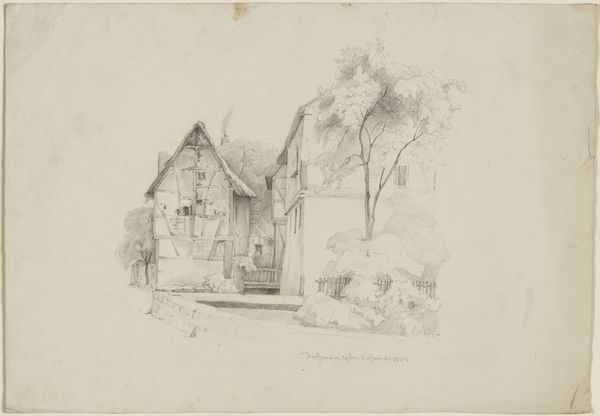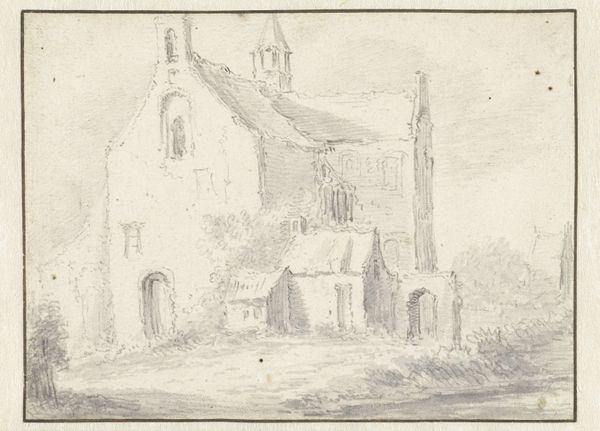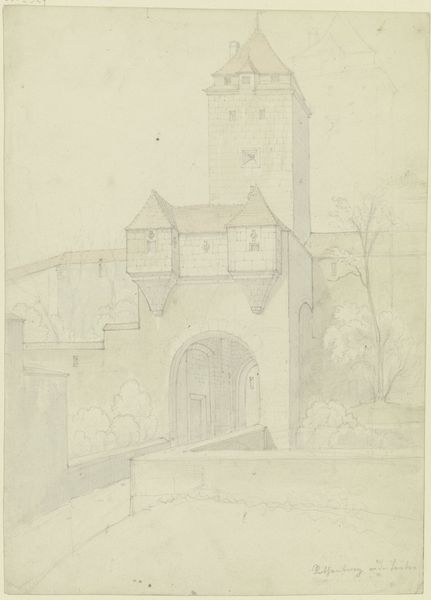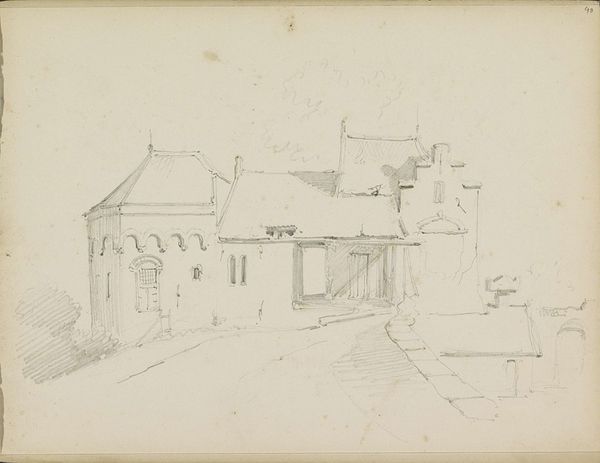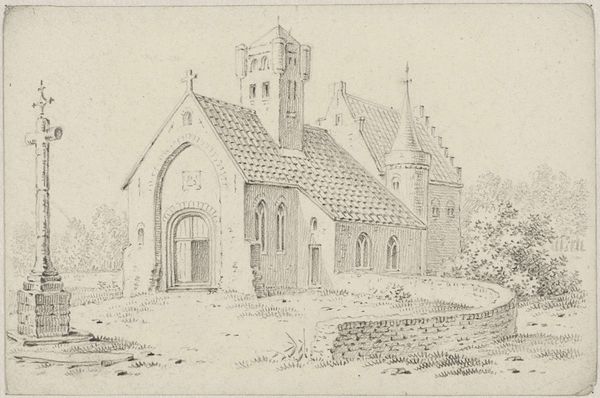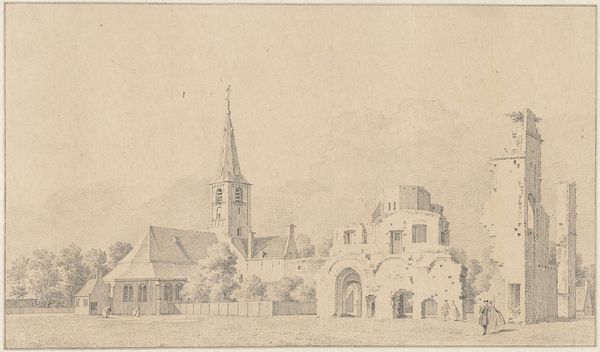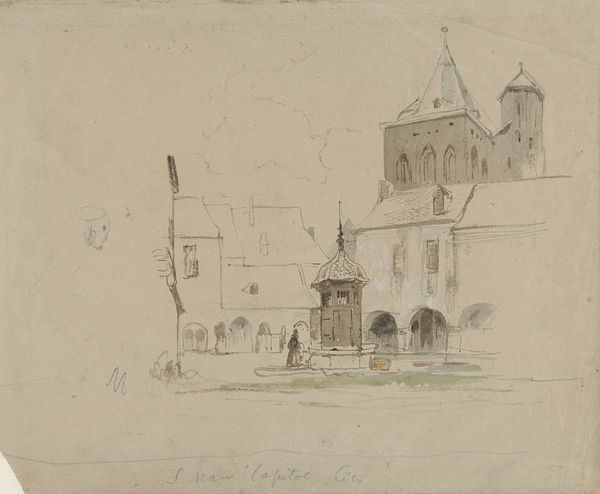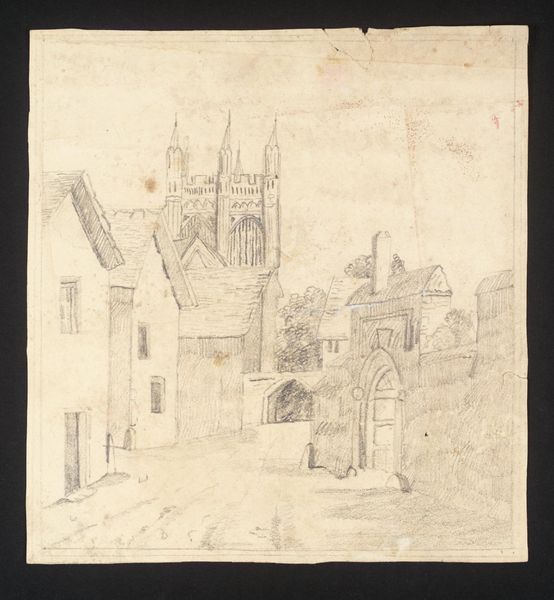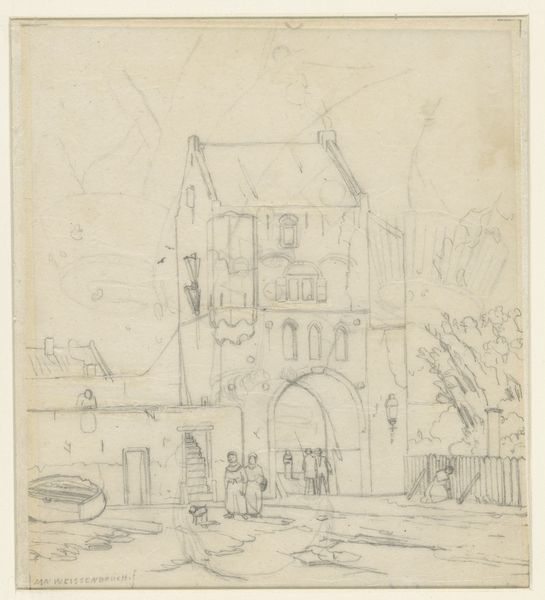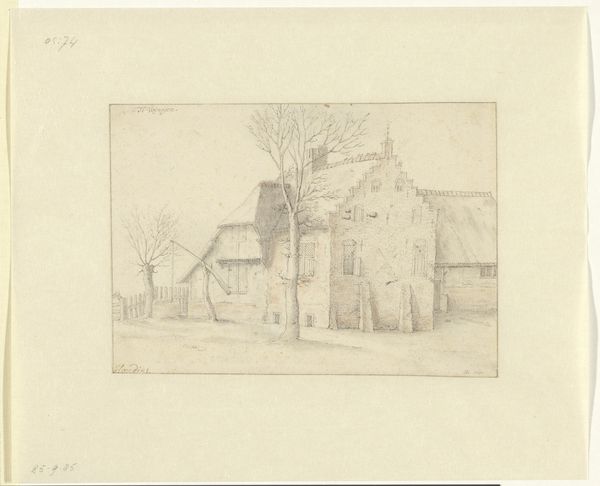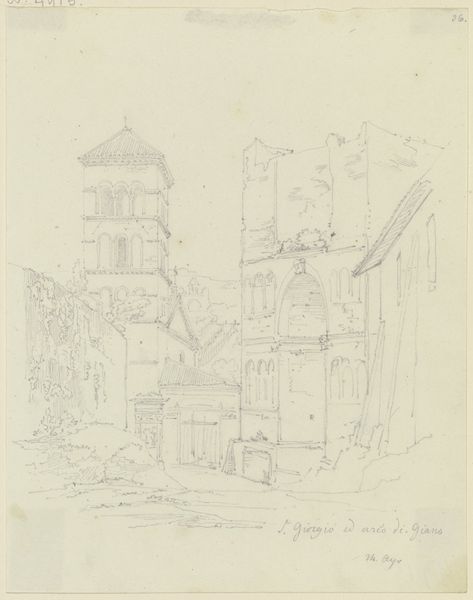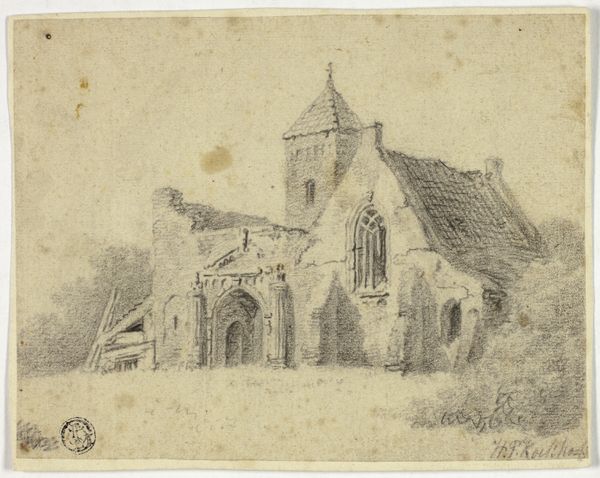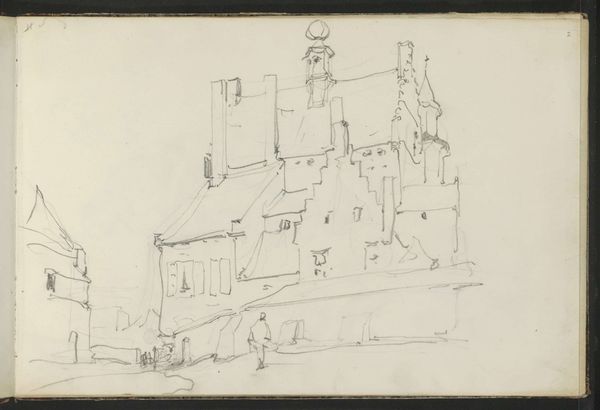
Copyright: Public Domain
Curator: This delicate drawing, "Der Lollarer Kirchberg an der Lahn," by Victor Müller, dating from 1842, depicts a church in a state of picturesque decay. It is rendered in pencil on paper and is currently held at the Städel Museum. Editor: It immediately strikes me as an exercise in understated grandeur. The subtle pencil work and monochromatic palette emphasize form and composition. Curator: Precisely. The image exists within the context of early 19th-century Romanticism and speaks to the era’s fascination with ruins, nature, and a perceived idyllic past. These architectural depictions often symbolize both spiritual authority and its inevitable decline, perhaps a commentary on the social and political transformations underway at the time. How do you see this playing out here? Editor: It's the contrast that's captivating: the fragility of the line work versus the permanence of stone. Müller focuses my eye through carefully weighted areas, with delicate variations in shading which give the piece depth. This tension between permanence and the provisional feel of the sketch becomes an intriguing formal quality in itself. Curator: The "feminization" of ruins was prevalent in this period as they evoked melancholic nostalgia. Viewing this piece through a contemporary lens reveals insights into the dynamics of power and loss expressed within this seemingly straightforward depiction of architecture. The artwork then echoes gendered interpretations tied to social norms. What seems, on the surface, a calm study resonates with quiet yet potent sentiments. Editor: It highlights a more significant underlying structural elegance in architecture that often gets glossed over by heavy handed portrayals. Curator: Indeed, observing this Romantic-era church, mediated through a 19th-century lens of cultural understanding enriches our understanding of historical expression and sentiment in times past. Editor: This work has shown me how the bare minimum artistic tools, in expert hands, creates much more complexity in art that the subject may suggest.
Comments
No comments
Be the first to comment and join the conversation on the ultimate creative platform.
